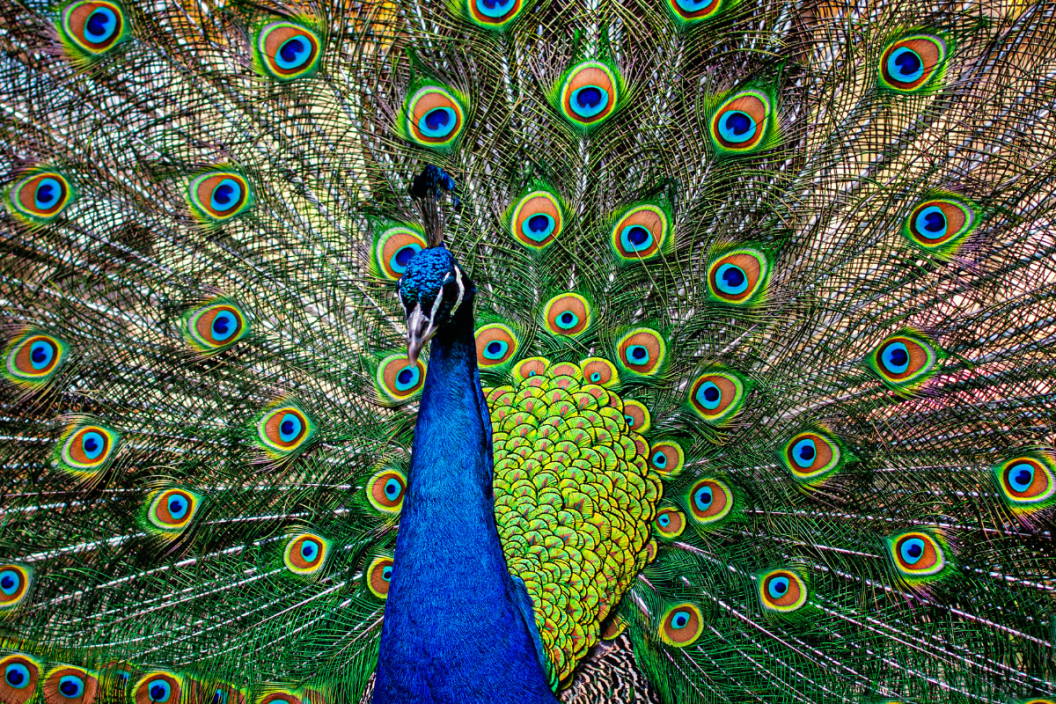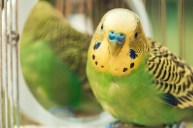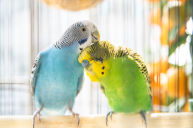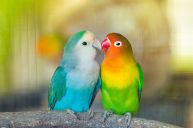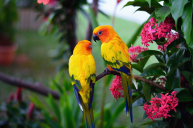Need some color in your life? Consider a pet peacock. That is, if you're up for the challenge!
Peacocks are exotic birds that can make a stunning addition to any yard, but be prepared to give these birds the high amount care that they need. Keeping peacocks as pets requires more than just admiring their beautiful plumage. They are fun and festive to have around, but it is important to educate yourself about their health and habits before keeping peacocks as pets.
What most people refer to as peacocks are rightfully called peafowl. (Peacock is the name for the male of the species.) There are three species of peafowl: blue peacocks or the Indian peafowl, the green or Java peafowl, and the Congo peafowl. Because the green peafowl is one of many endangered birds, it is not recommended to keep them as pets. The blue peafowl generally makes the best pet, as it is more adaptable, tamer, and less aggressive than other types.
No matter which type you choose, there are a few things you should know about general care before bringing your peafowl home.
Tips for Keeping Peacocks as Pets
1. Have Plenty of Land
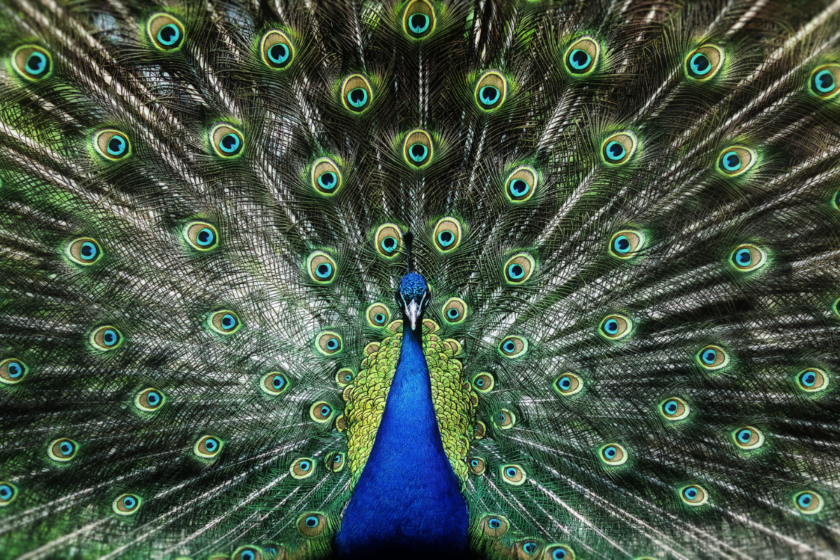
Peafowl require at least 25 square meters (or 80 square feet) per bird. This space is important in order to prevent disease, as well as fighting among the birds. Pens should be at least 2.5 meters (7 feet 10 inches) in height so that peafowl can fly and fan their tails. If you keep a male peacock, the pen should be large enough for him to display his long tail feathers without injury.
Another important reason for having the right amount of space: Peafowl have a loud, shrill cry that can aggravate neighbors, especially during mating season. You will want to make sure you have enough room that your neighbors can't hear your peafowl. Peafowl are obviously best kept in rural areas.
2. Keep Them Warm
Adult peafowl are pretty hardy creatures, but it is still important to do what you can to help your peafowl stay comfortable, especially since all types of peafowl originated in areas with warmer climates. This is particularly important if your peafowl was bred in a tropical climate.
Wooden roosts are the best way to shield them from the cold. If you are raising peacock chicks from peafowl eggs, be sure to keep them in a heated area for four to six weeks after the baby peachicks start to hatch. You should keep the temperature over 95º F and lower it by about 5º F every week during the incubation period.
3. Safety First
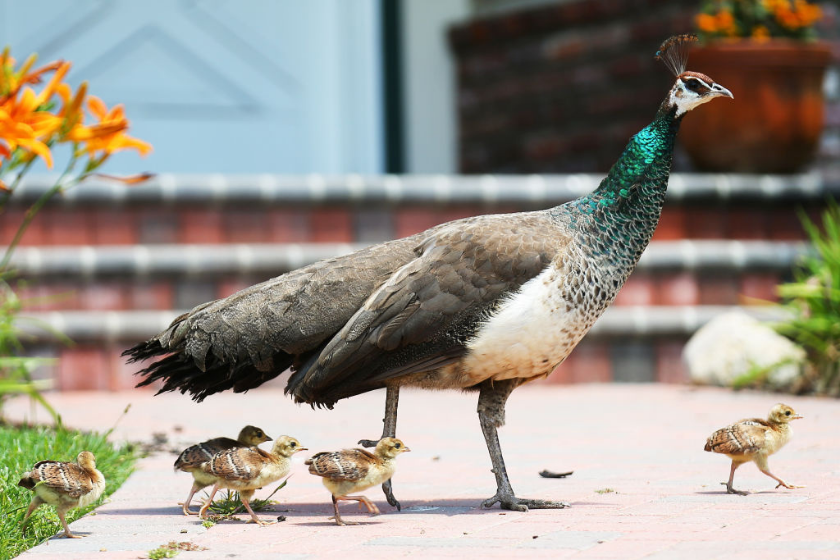
Mario Tama/Getty Images
Predators like coyotes, dogs, and foxes are the main concern for peafowl owners, especially those that are free-range. Tree houses are the best way to protect them from predators, and peafowl love to roost up high.
Wherever you keep your peafowl, make sure it is dry and warm, as muddy or wet conditions can cause disease or tail feather breakage. A large pen surrounded with chicken wire, with a wooden shelter or hen house with a nesting area, complete with a warming light, is a good example for a pet peacock habitat.
4. Feed Them Properly
The National Bird of India should have access to fresh water and be fed two handfuls of mixed grain every day. This grain can be purchased at most feed stores, and most game bird feed, like turkey, chicken, or pheasant feed, is also fine for half to two thirds of these omnivore's diet.
About 5-10% of the peafowl's complete diet should consist of peanuts or sunflower seeds, supplemented with green vegetables such as cabbage or kale. You can feed bread or fruit as an occasional treat, but never give your peafowl bones, as they may choke. Another option for a higher protein diet would be to include some cat or plant-based dog food.
Peafowl like to wander, so if your peafowl are free range, it is extra important to feed them well so they want to return at night and don't go seeking food elsewhere.
5. Pay Attention to Their Health
Peafowl need to be dewormed every two months. Products like Piperazine, IVOMEC, or Ivermectin cattle wormer can do the trick. You can also find herbal worming products at most feed stores.
You should also check your peafowl for external parasites like mites, lice, and chiggers. Since peafowl are not common pets or farm animals, there is no established vaccine schedule for them, but avian pox, blackhead disease, and coccidiosis is always a concern. Ask your vet on how to prevent and treat these diseases.
If you follow these tips, you can keep healthy, happy, free-ranging peafowl, and your life will be much more colorful. In some cultures these beautiful birds are even known to bring good luck!
Want some other fun facts about peafowl?
- What about male peafowl, peahens and courtship displays? The eye movements of female peacocks during courtship were mainly concentrated on the male's legs and lower feathers, rather than the tall display of iridescent feathers. Only the male has that beautiful tail!
- What about the various species? There are three species of peacocks that belong to the genus Pavo, subfamily Phasianinae and family Phasianidae — They are Pavo cristatus (Indian peacock), Pavo muticus (green peacock), and Afropavo congensis (Congo peacock).
- Both the India and green species possess the hallmark peacock's tail with iridescent feathers.
- Breeding season? Through spring into early summer, peacocks will form what is known as a lek. A lek is a group of males, each with their own small territory, taking part in mating rituals such as displaying their train, dancing, and calling out in order to attract the females. Displaying peacocks happens during courtship.
- Supplements for peafowl? You may wish to supplement the peafowl feed with a high-protein, meat-based feed such as cat food.
- The peafowl dance honors many peacock species that originated in southeast Asia; it can be found at festivals across both India and Indonesia in places like Cambodia, Sri Lanka, Myanmar, Bangladesh, and more!
Would you ever own a peaock as a pet? Let us know at our Wide Open Pets Facebook!
This article was originally published January 1, 2020.
